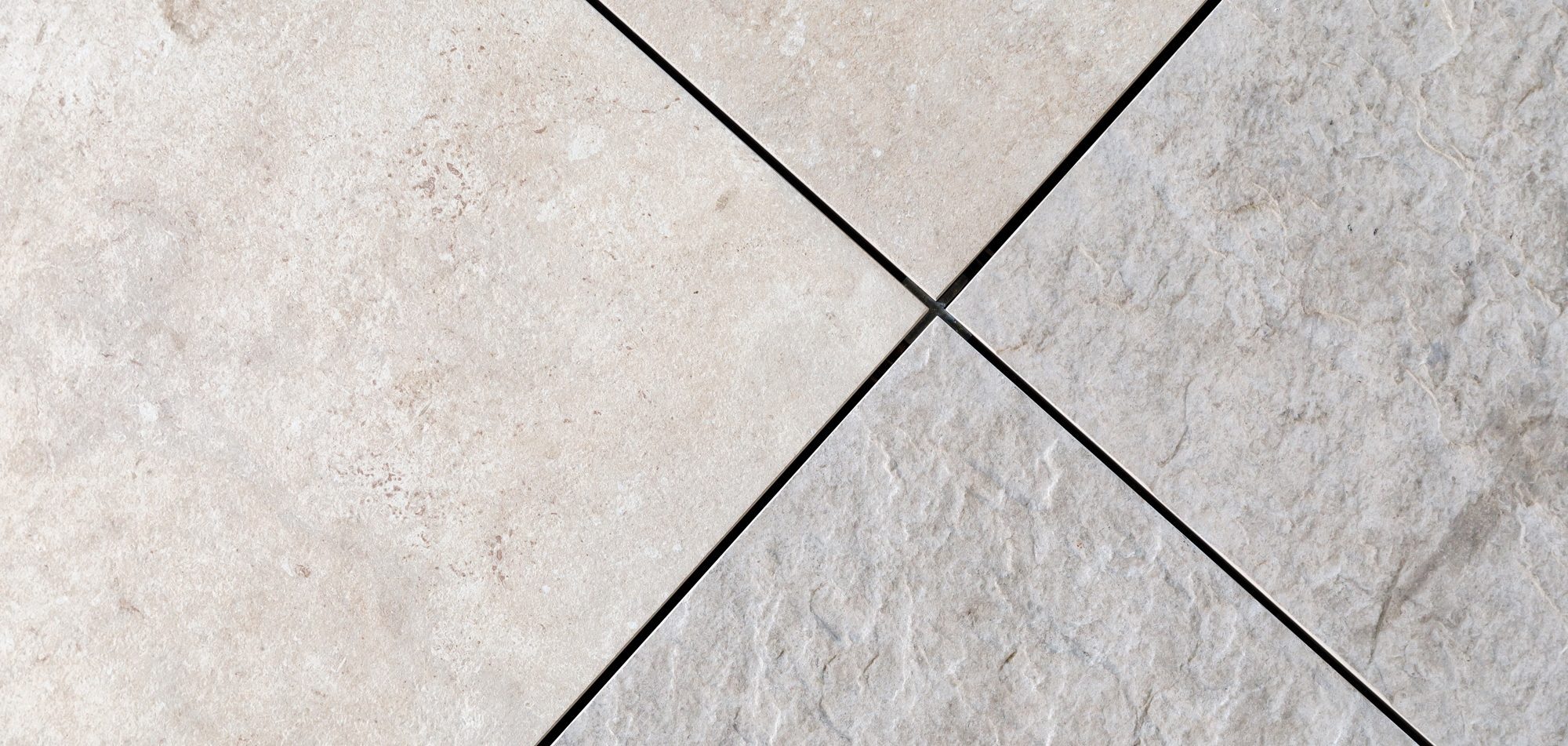Is porcelain paving slippery when wet?
It is a great question! Have you ever been hiking and walked across wet stepping stones or even encountered the surprise of a foyer with marble floors after coming in from the rain? Then you will know the sinking feeling in the pit of your stomach as your foot surprisingly betrays you and makes a swift exit from beneath you! You have two choices; you either end up skating across the floor like Bambi on a frozen pond, or you have a rather forceful encounter with the ground!
Porcelain paving is a finish that often mimics the aesthetics of stone, so it is perfectly normal to worry whether porcelain tiles are slippery when wet! When water lies on a non-porous surface, such as stone, it creates an area of low friction, and this is what causes it to be slippery. This is exemplified when the surface is smooth, for example, polished marble.
Porcelain pavers intended for outdoor use are specifically designed to walk on and minimise the slip risk using grippy surfaces. By using imperfections and ridge marks to increase the friction between a tile and your shoe, you create a surface fit to walk on in differing conditions.
How do we know how slippery porcelain paving is?
We can calculate it using a test designed to calculate the pendulum test values (PTV), and we can assign a numerical value to the slippiness of a surface.
How do you calculate a PTV value?
A rig is set up above a test surface that holds the pendulum arm parallel to the test surface. This arm is at a length so that it comes into contact with the surface when it is perpendicular.
Let’s quickly jump back to school to help with this. If you release the pendulum at 90 degrees to the floor without coming into contact with anything, then the laws of conservation of energy say it will end its swing at 90 degrees with the floor. Therefore, we can be sure that any different outcome is because of outside interference.
When the pendulum comes into contact with the test tile, it loses some of its kinetic energy to friction. This loss will mean the swing will not finish at 90 degrees to the surface, and we can measure the change in final height. This is the coefficient of friction (CoF) and it gives us our PTV value.
The slippier the surface loses less energy to friction, meaning the pendulum will swing higher. You can apply the same principles to the grippier surface, generating a higher value.
There are several testing conditions; slider 96 and Slider 55, and wet and dry.
Slider 96/55 – You place rubber sliders on the end of the pendulum.
Slider 96 is a harder rubber, so you use it to emulate the effect of pedestrians wearing shoes.
Slider 55 is a softer rubber, often used to mimic walking with bare feet.
Wet and dry – …the definition for this is not going to revolutionise the way you think, but it is always good to set it out in writing so that no one jumps to the wrong conclusions. Lying water on the flooring surface will add a low friction layer on top of the finish making the sample being tested slippier. When these tests are conducted, the tests are often done in wet and dry conditions to fully understand the range of slippiness.
How do you read PTV results?
The results that come from the PTV test only give an indicator of how slippy the finish is; or the slip potential. Many other factors will influence how they behave underfoot, but this gives us an accurate idea.
The results you get go from 0 up.
0 – 24 is a high slip potential.
25 – 35 is a moderate slip potential.
36+ is a low slip potential.
Does ice make porcelain paving slippery?
When temperatures drop to freezing point, ice can begin to form on the paving making it very slippery.
“Where weather or low-temperature results in surfaces being covered in snow or ice, the slip resistance of a surface ceases to be effective.” – BS8 300
It is, therefore, important that external ramp surfaces are kept free of snow or ice as part of the management regime of the space, this can be easily done by regularly applying deicing salt.
So how does porcelain paving shape up?
Porcelain paving is an incredibly versatile non-combustible flooring finish. Its design is for use outdoors, where it will encounter more adverse conditions. This type of paving is usually classed with a low slip potential even on wet surfaces, some tiles even get a score of 107 on the PTV test.
The actual test figure will depend on the specific finish; some will perform worse than others. This depends, usually on the coating of the porcelain, and the contours or textures on the top of the finish. These will increase the friction between the pedestrian and the tile
Answering the question “Is porcelain paving slippery?” is truly dependent on the individual tile and the conditions it is in. What we can say is that; with most paving, wet or dry, barefoot or with shoes, there is often a low slip potential when walking.





